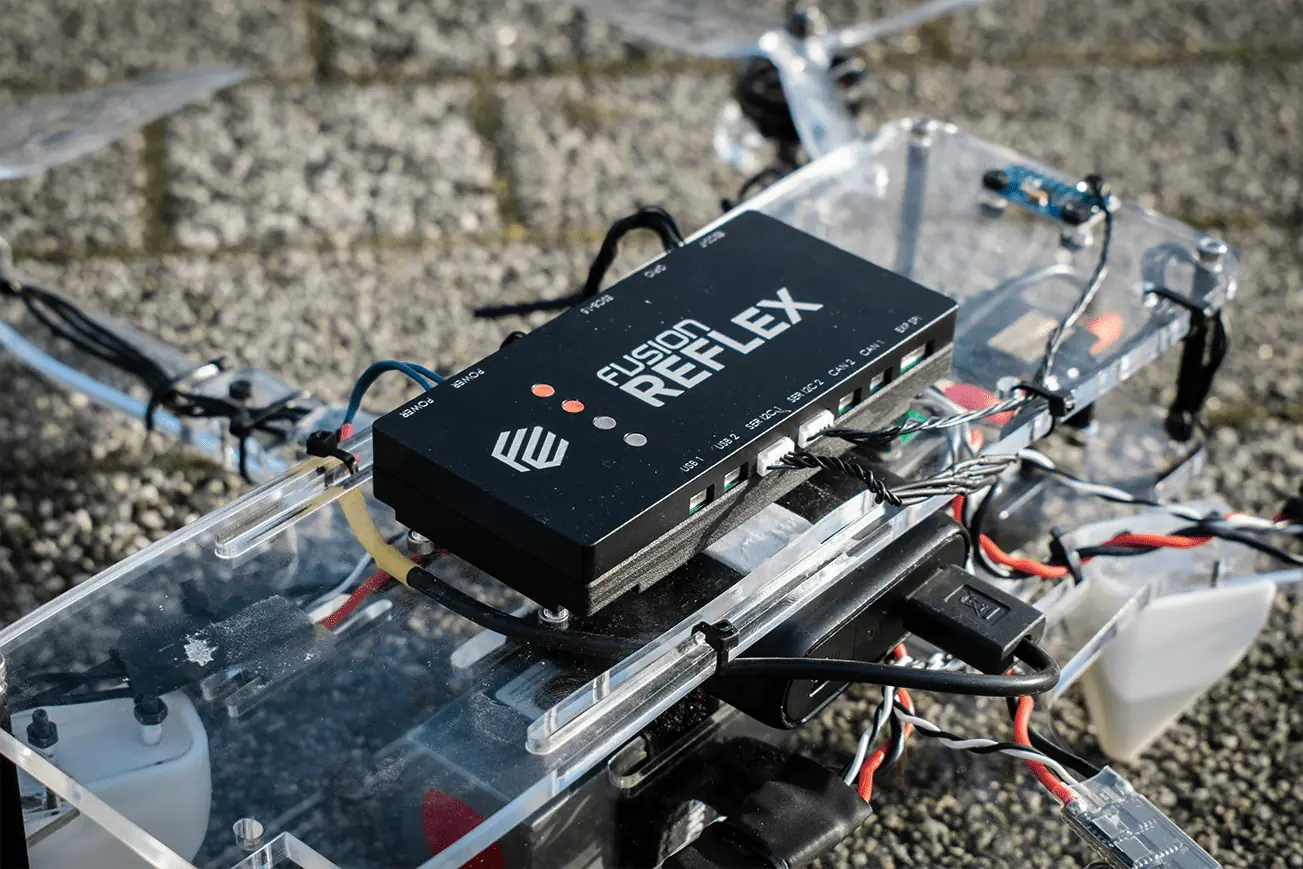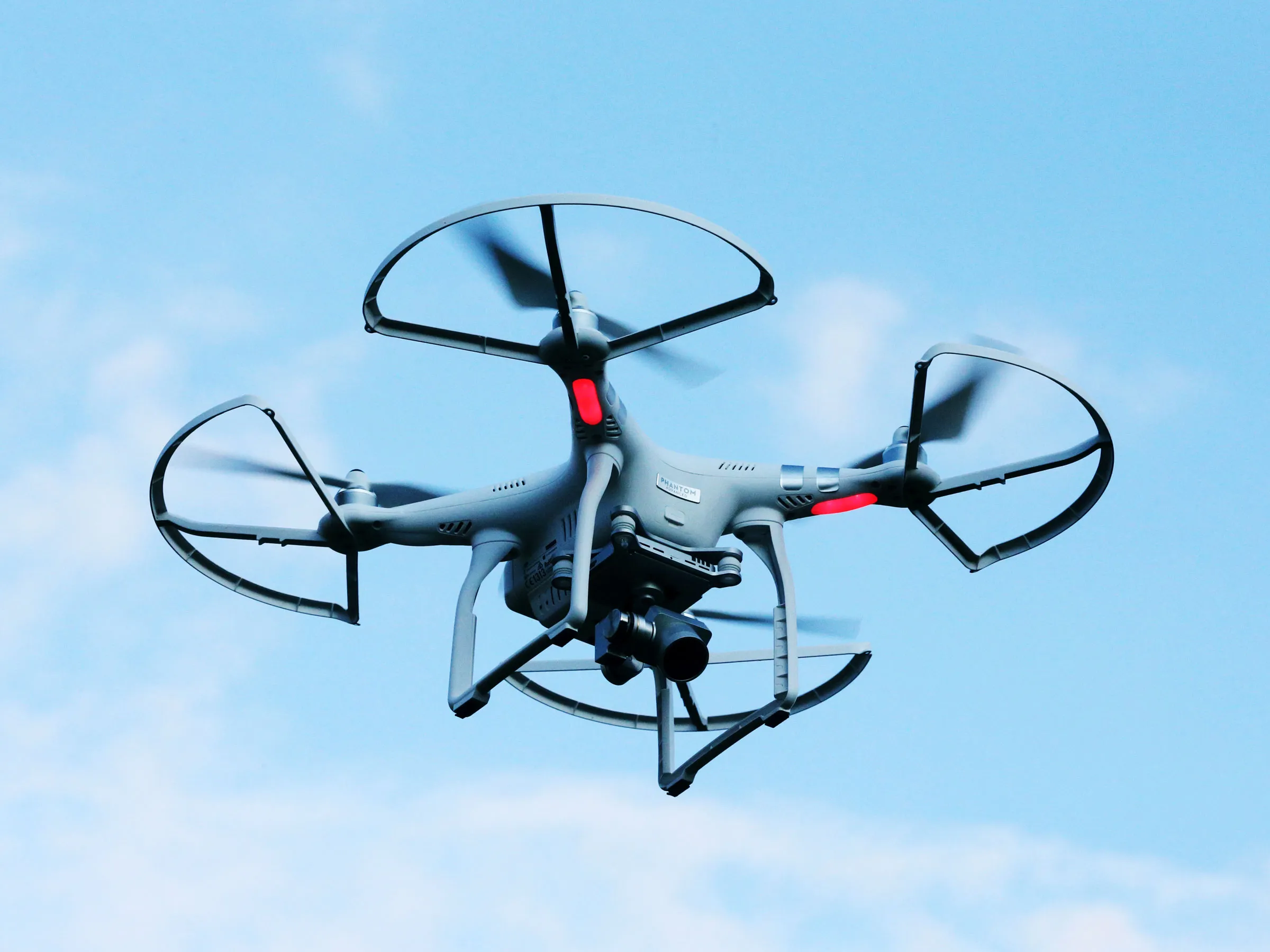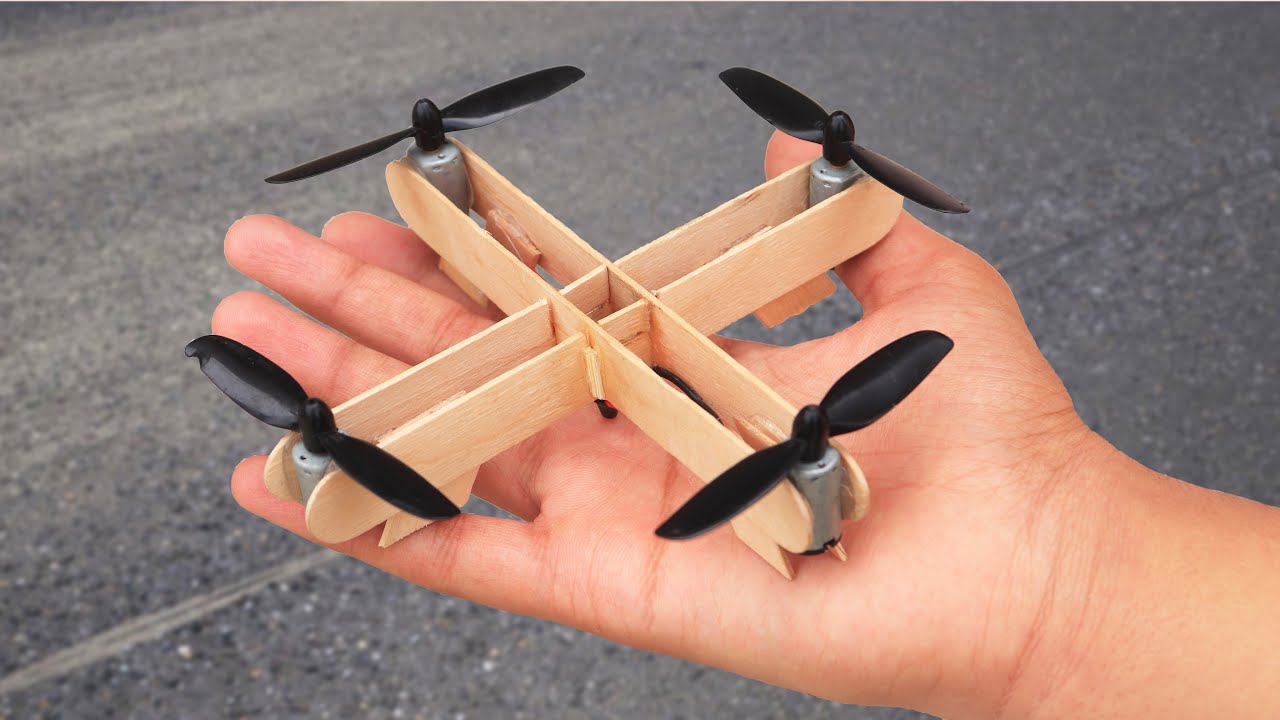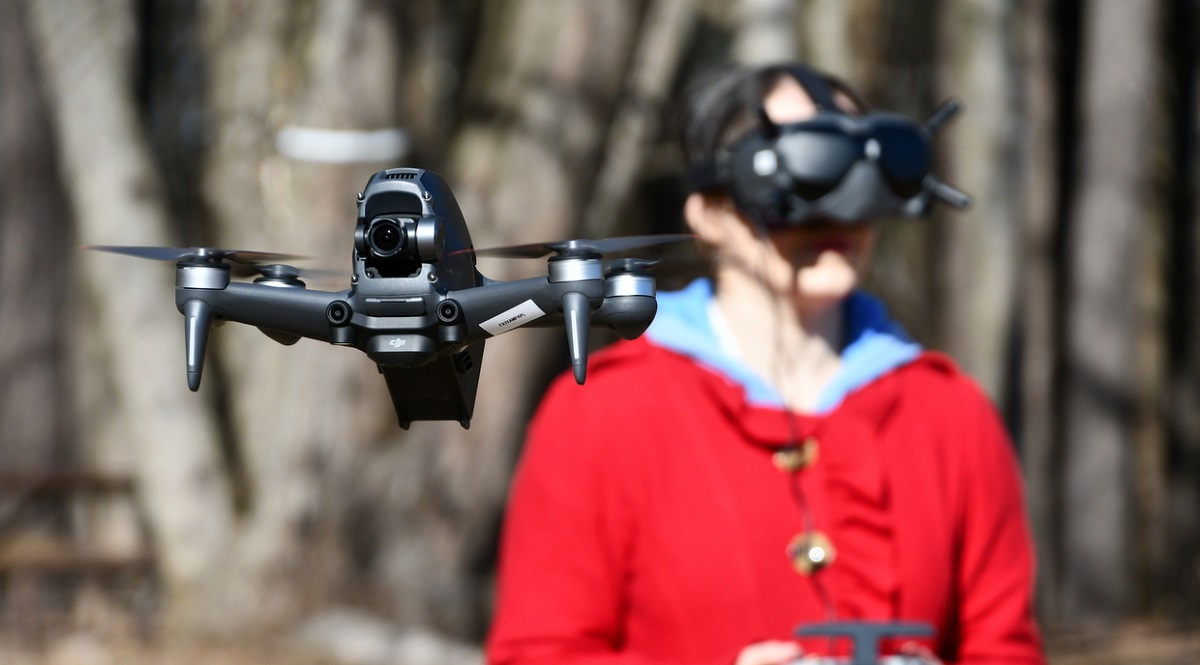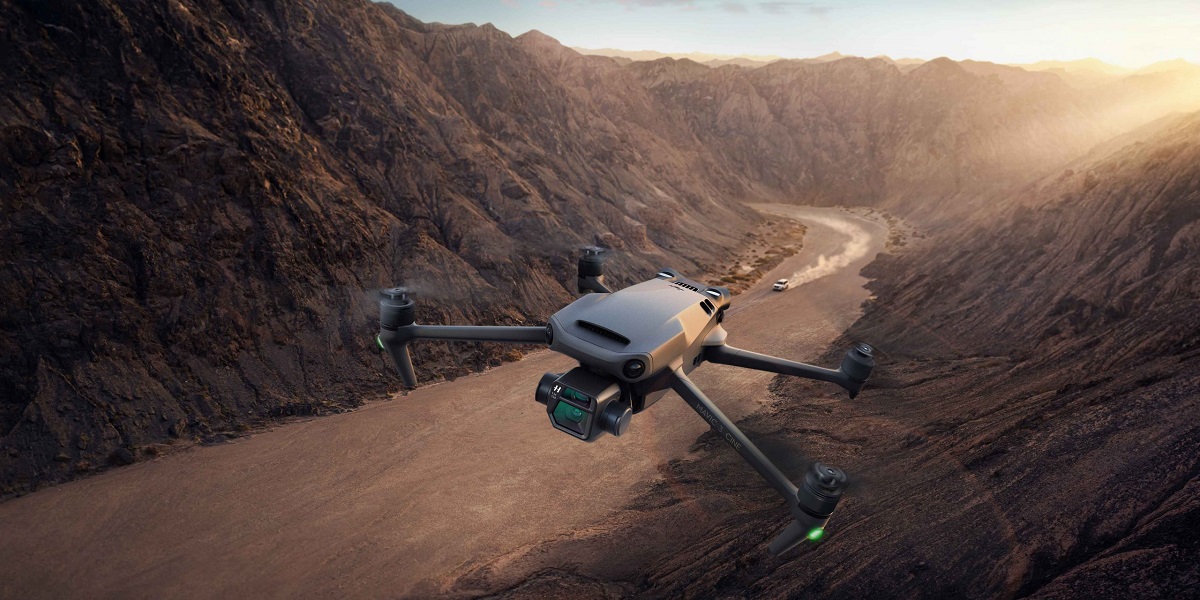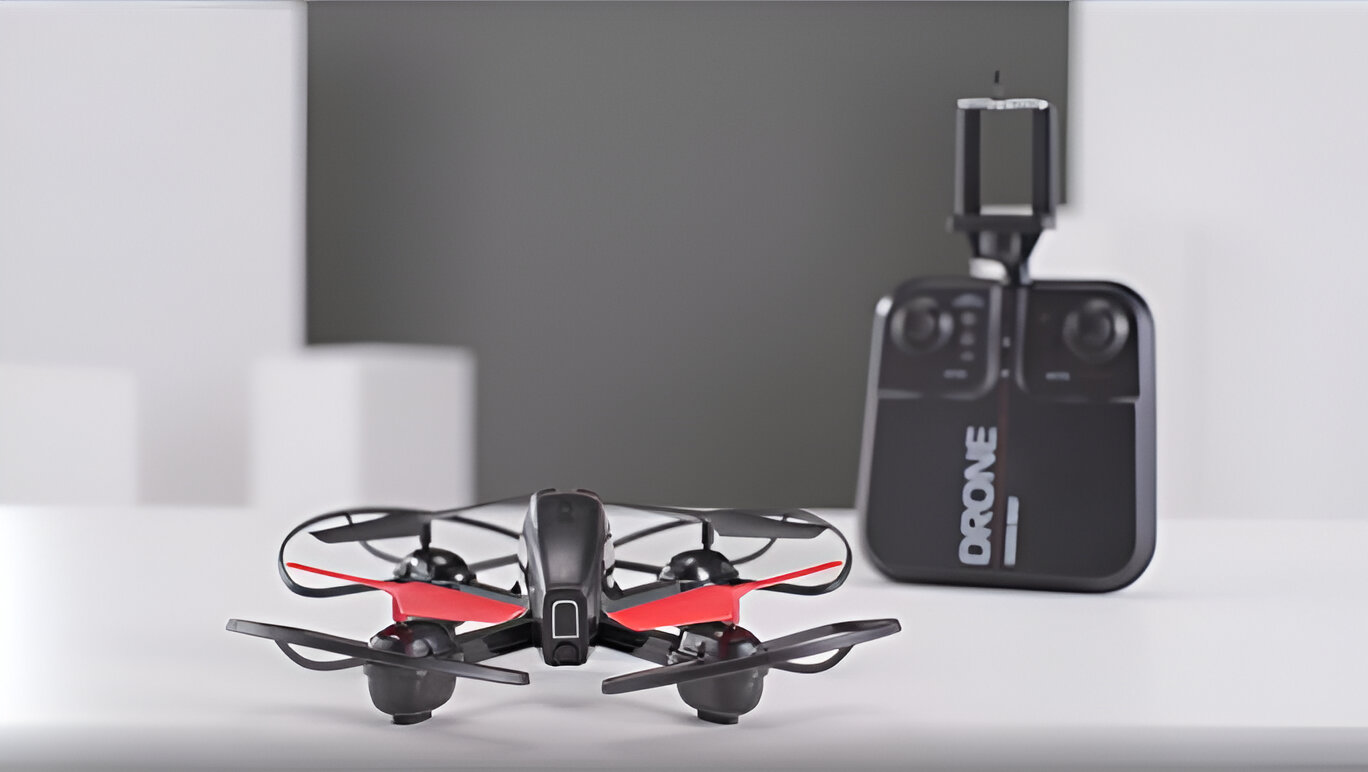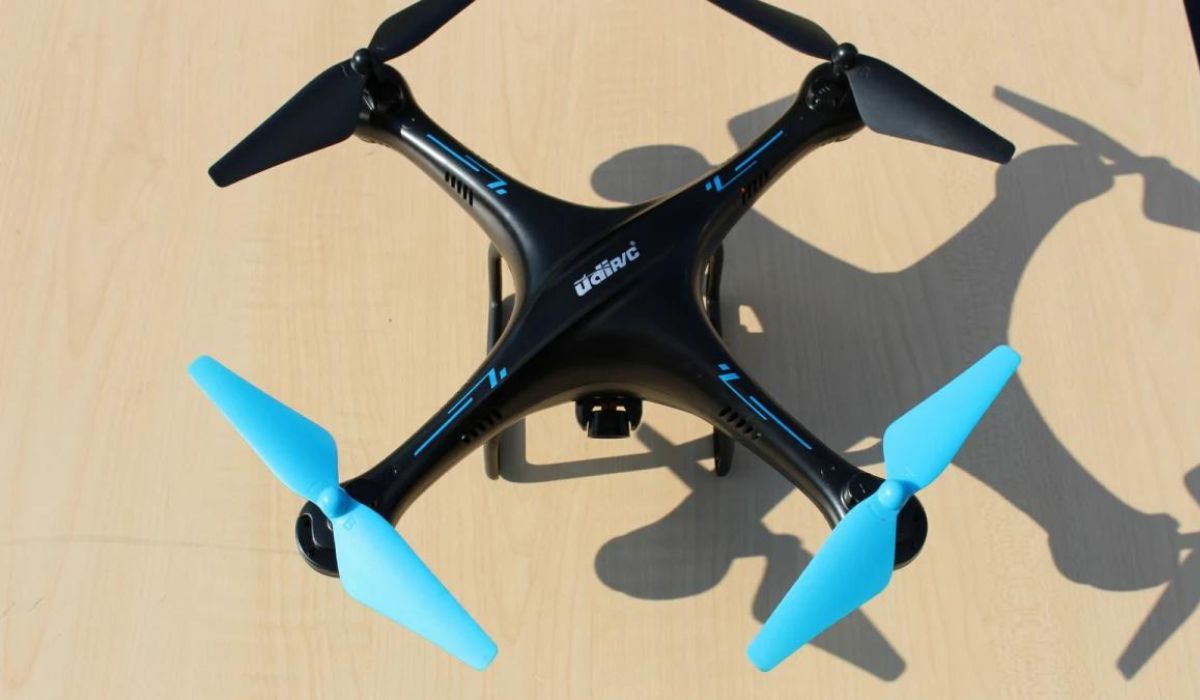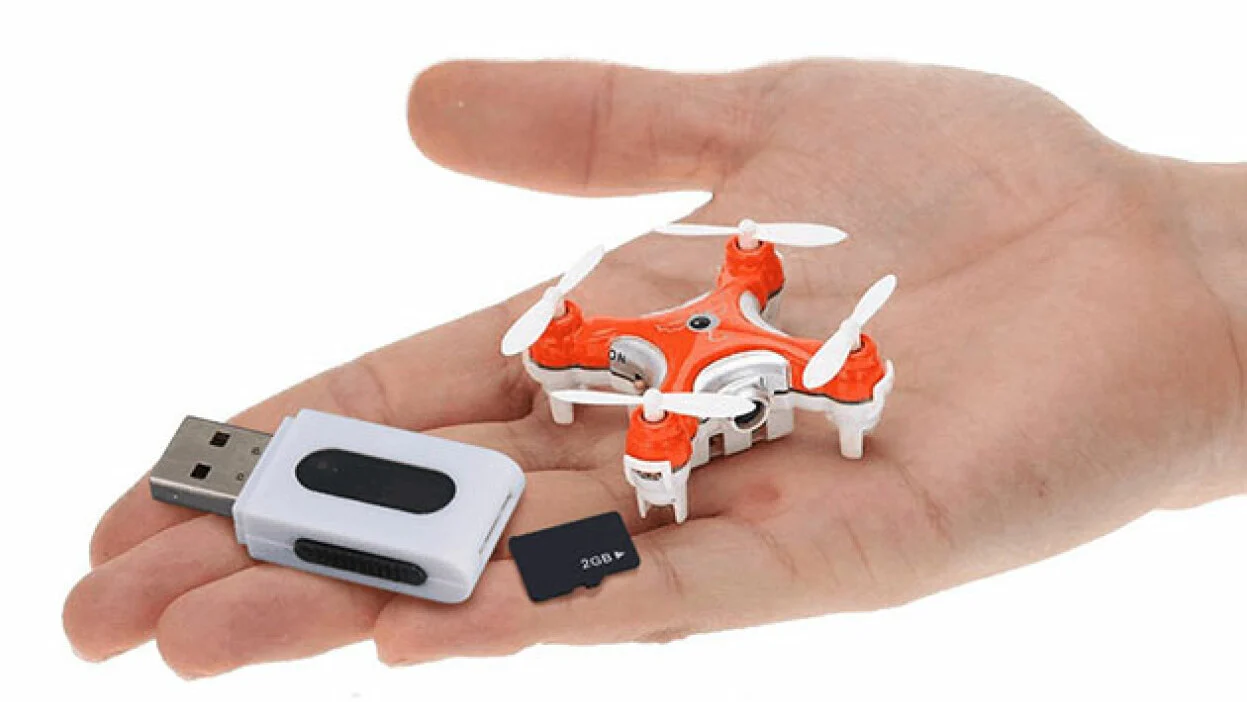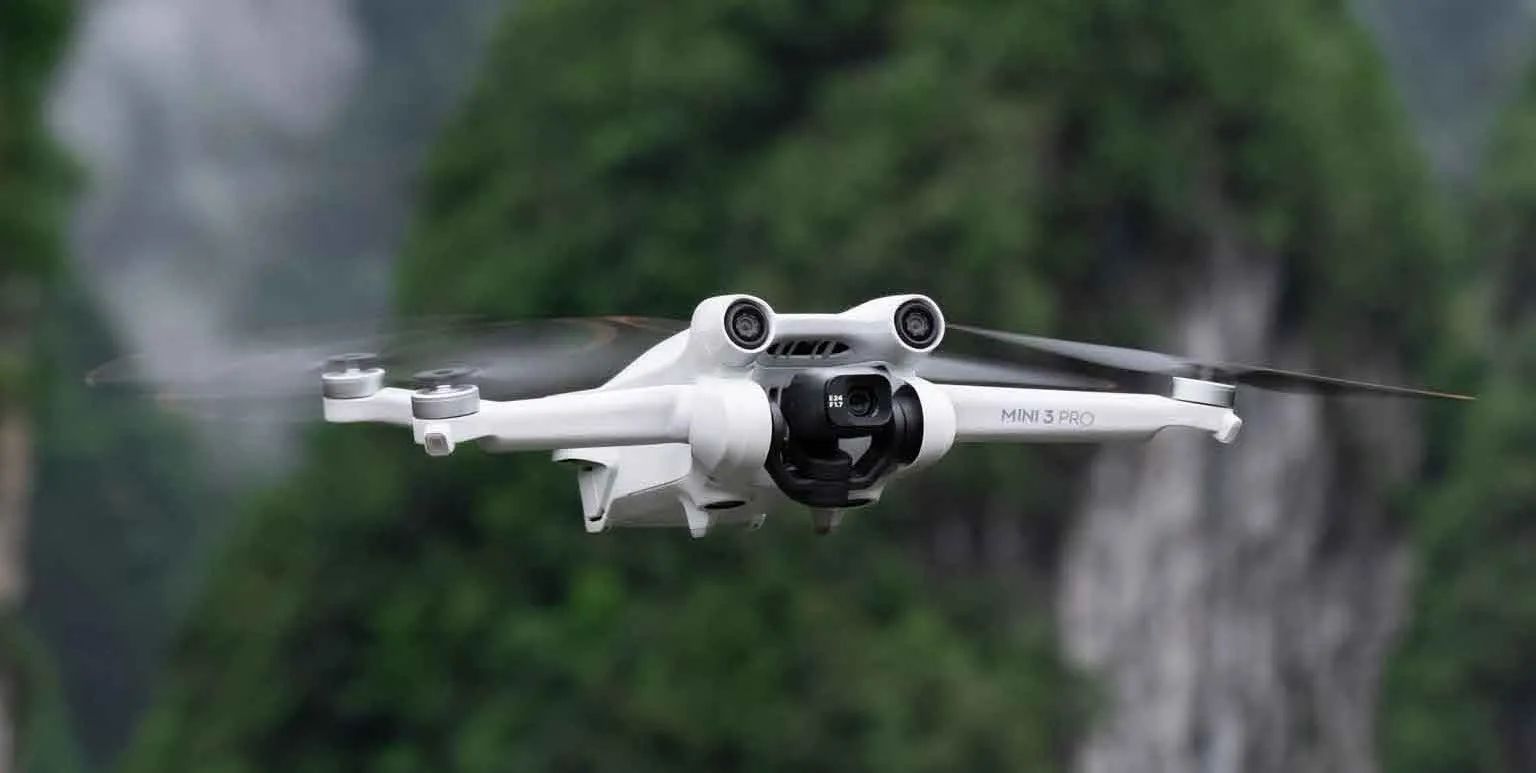Introduction
A flight controller is a crucial component of a drone that plays a significant role in controlling its flight operations. It serves as the brain of the drone, interpreting the user’s inputs and translating them into precise commands for the drone’s motors. This advanced electronic device is responsible for stabilizing the drone, maintaining its altitude, and executing various flight modes.
With the increasing popularity of drones, flight controllers have evolved to incorporate cutting-edge technology and sophisticated algorithms. They are designed to improve flight performance, enhance stability, and provide an optimal flying experience for both hobbyists and professional drone pilots.
In this article, we will delve deeper into the world of flight controllers, exploring their components, functions, types, and factors to consider when choosing one. We will also discuss the installation and configuration process, as well as troubleshooting common issues that may arise with flight controllers.
Whether you are a drone enthusiast or considering entering the world of aerial photography, understanding flight controllers is essential for maximizing the capabilities of your drone and ensuring safe and enjoyable flights.
What is a Flight Controller?
A flight controller is a specialized electronic device found in drones that controls the flight operations. It serves as the brain of the drone, receiving input from the user and translating it into commands for the drone’s motors, sensors, and other components.
The primary role of a flight controller is to stabilize the drone during flight, ensuring it remains level and maintains its desired altitude. It achieves this by constantly monitoring the drone’s orientation using onboard sensors such as accelerometers and gyroscopes. These sensors provide real-time data on the drone’s pitch, roll, and yaw, allowing the flight controller to make instant adjustments to maintain stability.
Furthermore, a flight controller is responsible for executing various flight modes and maneuvers. These modes can include different levels of stability, such as Manual Mode, where the pilot has full control, or Autonomous Mode, where the drone can follow pre-programmed flight paths or perform automated tasks.
Flight controllers also play a crucial role in implementing safety features to prevent accidents and improve flight reliability. They can include fail-safe mechanisms that automatically initiate emergency landing procedures or return the drone to its takeoff location in the event of a signal loss or low battery voltage.
In addition to controlling the flight, a flight controller interacts with other onboard components, such as the GPS receiver, compass, and barometer. These sensors provide vital information for features like position hold, altitude hold, and automatic return to home functionalities.
To sum up, a flight controller acts as the central processing unit of a drone, receiving input, making calculations, and executing commands to ensure stable and controlled flight. Its ability to interpret user inputs, process sensor data, and perform real-time calculations is what sets drones apart from traditional RC aircraft.
Components of a Flight Controller
A flight controller consists of several key components that work together to control the flight operations of a drone. Understanding these components is essential for gaining insight into how a flight controller functions. Let’s take a closer look at the main components:
- Main Processor: The main processor is the central processing unit (CPU) of the flight controller. It handles the execution of algorithms, calculations, and data processing.
- Gyroscope and Accelerometer: These sensors provide crucial data on the drone’s orientation and movement. The gyroscope measures angular rates, while the accelerometer measures acceleration along three axes.
- Barometer: The barometer measures atmospheric pressure, which is used to determine the drone’s altitude. It helps in maintaining altitude hold and allows the drone to perform precise maneuvers.
- GPS Receiver: A GPS receiver provides data on the drone’s geographical position, allowing for features like position hold, return to home, and waypoint navigation.
- Compass: The compass provides information on the drone’s direction, enabling it to maintain a specific heading during flight and navigate accurately.
- Electronic Speed Controllers (ESCs): ESCs are responsible for controlling the motor speeds based on the commands received from the flight controller. They regulate the power output of the motors, ensuring smooth and stable flight.
- Radio Frequency (RF) Receiver: The RF receiver receives commands and signals from the remote control or ground station and transmits them to the flight controller for processing.
- Power Distribution Board: This component distributes power from the drone’s battery to various onboard systems, including the flight controller and motors.
- Onboard Storage: Some flight controllers have onboard storage to store flight logs, firmware updates, and configuration settings.
- Connectivity Ports: These ports allow for connecting additional devices, such as telemetry modules, OSD (On-Screen Display), or other peripherals.
Each of these components plays a vital role in ensuring the accurate measurement of the drone’s position, attitude, and movement, allowing the flight controller to make real-time adjustments and maintain stable flight. The integration and synchronization of these components ultimately determine the overall performance of the flight controller.
Functions of a Flight Controller
A flight controller performs various essential functions that enable precise control and stabilization of a drone during flight. Understanding these functions is key to comprehending the capabilities and versatility of a flight controller. Let’s explore some of the main functions:
- Flight Stabilization: One of the primary functions of a flight controller is to stabilize the drone during flight. It uses sensor data from the gyroscope and accelerometer to detect any deviations from level flight and makes necessary adjustments to maintain stability.
- Altitude Control: The flight controller utilizes the altimeter and barometer sensors to control the drone’s altitude. It maintains a constant height by adjusting motor speeds and lift, allowing for accurate and stable maneuvers.
- Flight Modes: Flight controllers offer various flight modes that cater to different piloting preferences and skill levels. These modes can include Manual Mode, which gives the pilot full control over the drone’s movements, or Autonomous Mode, where the drone follows pre-programmed flight paths or performs specific tasks.
- Flight Telemetry: A flight controller provides real-time telemetry data to the pilot or ground station, including information on battery voltage, GPS coordinates, altitude, speed, and more. This data helps the user monitor the drone’s status and make informed decisions during flight.
- Fail-Safe Mechanisms: Flight controllers incorporate fail-safe features to ensure the safety of the drone in case of unexpected events. These features might include automatic return-to-home, emergency landing, or predefined actions when the signal is lost or the battery is critically low.
- Flight Logging and Analysis: Many flight controllers have the capability to record flight data, including sensor readings, pilot inputs, and GPS information. This data can be analyzed and used for troubleshooting, performance optimization, and enhancing future flights.
- Navigation and Waypoint Control: Flight controllers equipped with GPS can execute navigation functions such as waypoint navigation, where the drone follows a predefined route, or point of interest (POI) mode, where the drone circles around a specific location.
- Advanced Flight Features: Depending on the model and firmware, flight controllers may offer advanced features like follow-me mode, gesture control, obstacle avoidance, and more. These features enhance the drone’s capabilities and open up new possibilities for aerial photography and videography.
These functions collectively enable precise control, stability, and versatility, allowing drone pilots to achieve their desired flight behaviors and execute complex maneuvers. Different flight controllers may offer varying ranges of functionality, depending on their hardware, firmware, and customization options.
Working of a Flight Controller
To understand the working of a flight controller, it is essential to comprehend the sequence of operations it goes through during flight. Let’s explore the basic working principle of a flight controller:
- Receive Inputs: The flight controller receives inputs from the pilot via the remote control or ground station. These inputs include commands for throttle, pitch, roll, and yaw control.
- Data Processing: The flight controller processes the received inputs and combines them with data from onboard sensors, such as the gyroscope and accelerometer.
- Stabilization and Orientation: Using the sensor data, the flight controller determines the drone’s current attitude and makes adjustments to stabilize the aircraft. It adjusts the motor speeds and control surfaces to maintain level flight.
- Altitude Control: The flight controller uses the barometer and altimeter to monitor the drone’s altitude. It adjusts the motor speeds to maintain a constant height or execute altitude changes as per user input.
- Flight Modes: Based on the selected flight mode, the flight controller adjusts its response to user inputs. For example, in Manual Mode, it directly translates the pilot’s inputs into motor and control surface movements, while in Autonomous Mode, it follows pre-programmed instructions.
- Communication with Other Components: The flight controller communicates with other onboard components, such as the GPS receiver, compass, and electronic speed controllers (ESCs), to gather position and heading information and control motor speeds.
- Feedback Loop: The flight controller constantly receives real-time feedback from the sensors and adjusts the control outputs accordingly. This feedback loop ensures stable flight and precise control.
- Fail-Safe Systems: Flight controllers often incorporate fail-safe mechanisms to ensure the safety of the drone. These systems can initiate emergency procedures, such as auto-landing or return to home, when critical events occur, like signal loss or low battery voltage.
- Telemetry and Logging: Many flight controllers provide telemetry data and record flight logs, allowing users to monitor the drone’s status and analyze flight performance or troubleshoot issues post-flight.
The working of a flight controller involves a complex interplay of data processing, sensor inputs, control outputs, and communication with other components. The precise algorithms and calculations performed by the flight controller enable stable flight, accurate control responsiveness, and the execution of advanced flight capabilities.
Types of Flight Controllers
The world of flight controllers offers a variety of options, each catering to different types of drones and user requirements. Let’s explore some of the main types of flight controllers available:
- Basic Flight Controllers: These are entry-level flight controllers suitable for beginner drones or those with basic flight capabilities. They typically have limited features and functionalities but provide stable flight control.
- Advanced Flight Controllers: Advanced flight controllers are designed for more professional-grade drones. They offer a wider range of features and customization options, such as support for multiple flight modes, advanced stabilization algorithms, and integration with external systems.
- Open-Source Flight Controllers: Open-source flight controllers, like the popular ArduPilot and Betaflight, provide flexibility and customization options for drone enthusiasts and developers. They offer extensive software configuration and allow for the development of custom features.
- F3, F4, F7 Flight Controllers: These flight controllers are named after the STM32 microcontrollers they are based on (e.g., F3, F4, F7). Each iteration offers improved performance, faster processing, and more advanced features.
- Integrated Flight Controllers: Integrated flight controllers come as part of a combo package with other components, such as a power distribution board, built-in ESCs, or a built-in OSD. These all-in-one solutions provide compact and simplified wiring setups.
- Autopilot Systems: Autopilot systems, like the popular Pixhawk series, offer advanced navigation, automation, and autonomous flight capabilities. They are commonly used in professional applications, including aerial mapping, surveying, and drone delivery.
- Custom-Built Flight Controllers: Experienced drone builders and enthusiasts sometimes opt to build their own flight controllers using development boards, microcontrollers, and custom firmware. This approach allows for complete customization and tailored features.
It’s important to consider the specific requirements, capabilities, and compatibility of a flight controller with your drone before making a choice. The selection of the right flight controller depends on factors such as drone size, intended use, desired flight modes, and the availability of compatible peripherals and software.
Factors to Consider while Choosing a Flight Controller
When selecting a flight controller for your drone, several crucial factors should be taken into consideration to ensure compatibility, performance, and a seamless flying experience. Let’s explore these factors:
- Drone Size and Weight: The flight controller should be suitable for the size and weight of your drone. Larger drones may require more powerful flight controllers to handle the increased load and provide optimal performance.
- Flight Modes and Features: Consider the flight modes and features offered by the flight controller. Determine if it provides the functionality and customization options you require for your specific drone activities, such as autonomous flight, waypoint navigation, or aerial photography features.
- Compatibility: Ensure that the flight controller is compatible with your drone’s power distribution system, motors, ESCs, and other onboard components. Check the pin configuration and protocols supported by both the flight controller and peripherals.
- User Interface and Configuration: Consider the ease of configuring and adjusting settings on the flight controller. Some flight controllers offer user-friendly graphical interfaces or have compatibility with configuration software, making customization and adjustments more straightforward.
- Support and Documentation: Look for flight controllers that have good community support and available documentation. Active online forums, tutorials, and user guides can be invaluable resources when troubleshooting issues or exploring advanced features.
- Expandability and Future Upgrades: Consider the expandability and upgradability options of the flight controller. Determine if it supports additional peripherals or sensors that you may want to integrate in the future, such as a gimbal or an FPV system.
- Budget: Set a budget for your flight controller purchase. While there are flight controllers available at various price points, keep in mind that investing in a higher-quality flight controller can result in better performance, stability, and future-proofing.
- Brand Reputation: Consider the reputation and track record of the flight controller’s manufacturer. Brands known for producing reliable, well-supported, and regularly updated products are often a safer choice.
- Reviews and Recommendations: Read reviews and seek recommendations from trusted sources or experienced drone pilots. Real-world experiences and feedback can provide valuable insights and help you make an informed decision.
By carefully considering these factors, you can select a flight controller that meets your drone’s requirements, aligns with your flying goals, and ensures optimal performance and reliability.
Installation and Configuration of a Flight Controller
Installing and configuring a flight controller is a crucial step in setting up your drone for flight. Here are the general steps to follow in the installation and configuration process:
- Choose Mounting Location: Select a suitable location in your drone’s frame to mount the flight controller. It should be secure, vibration-free, and ideally positioned in the drone’s center of gravity.
- Connect Power: Connect the flight controller to the power distribution board or battery, ensuring the correct polarity and secure connections.
- Connect Other Components: Connect other necessary components such as the GPS module, receiver, ESCs, and any additional peripherals, according to the flight controller’s pin configuration and instructions.
- Verify Orientation: Ensure that the flight controller is properly oriented and aligned with the drone’s frame. This step is crucial for accurate sensor readings and flight stabilization.
- Firmware Update: Check if there are any firmware updates available for the flight controller and follow the manufacturer’s instructions to update the firmware to the latest version. Firmware updates often bring bug fixes, performance improvements, and new features.
- Configure Flight Controller: Access the flight controller’s configuration software or interface. Here, you can adjust settings such as flight modes, control responsiveness, failsafe behavior, and other parameters specific to your drone and flying preferences. Consult the flight controller’s documentation or online resources for guidance on configuration options.
- Calibrate Sensors: Use the configuration software to calibrate the flight controller’s sensors, including the gyroscope, accelerometer, compass, and barometer. Sensor calibration ensures accurate readings and optimal flight performance.
- Test and Fine-tune: Perform an initial test flight in a controlled environment. Observe the drone’s stability, responsiveness, and overall behavior. If necessary, make adjustments to the flight controller’s settings to achieve desired flight characteristics.
It’s important to follow the specific instructions provided by the flight controller manufacturer and refer to the user manual or online resources for detailed information on installation and configuration processes. Take your time during this step to ensure proper setup, as it directly impacts the performance and stability of your drone during flight.
Troubleshooting Common Flight Controller Issues
While flight controllers are reliable electronic devices, occasional issues may arise during operation. Understanding and troubleshooting these common flight controller issues can help you identify and resolve problems effectively. Here are some common issues and troubleshooting steps:
- No Power or Connection: If the flight controller is not receiving power or is not connecting properly, check the wiring connections, ensure proper polarity, and verify that the power source is providing adequate voltage.
- Erratic or Unstable Flight: Erratic or unstable flight can be caused by sensor calibration issues or incorrect flight controller settings. Re-calibrate the sensors and check the configuration settings, particularly those related to stabilization, response rates, and PID tuning.
- GPS or Compass Issues: If the GPS or compass readings are inaccurate or unstable, make sure the GPS module is properly connected and positioned away from interference sources. Calibrate the compass following the flight controller’s instructions, and ensure the GPS has a clear view of the sky.
- Incorrect Orientation/Attitude: If the flight controller does not detect the correct orientation or attitude of the drone, check the alignment and mounting of the flight controller, ensuring it is properly oriented with the drone’s frame. Perform an artificial horizon test to verify the sensor readings.
- Unresponsive Controls: Unresponsive controls may be due to incorrect receiver connections or configuration settings. Verify the receiver connections and ensure that the transmitter is bound correctly to the receiver. Adjust the control channel mapping and endpoints if necessary.
- Interference or Signal Loss: If you experience interference or signal loss issues, make sure that the transmitter and receiver are on the correct frequency and within a suitable range. Check for any interfering objects or devices nearby, and consider using a failsafe system or telemetry to monitor signal strength.
- Software or Firmware Issues: If the flight controller’s software or firmware is malfunctioning, try reinstalling or updating the firmware to the latest version. Ensure that the firmware is compatible with your flight controller and follow the manufacturer’s instructions carefully.
- Overheating: Overheating can occur if the flight controller is under excessive load or if it is not properly ventilated. Ensure that the flight controller has adequate airflow and consider adding additional cooling, such as fans or heat sinks.
- Physical Damage: Physical damage to the flight controller, such as broken connections or components, can cause various issues. Inspect the flight controller for any visible damage and repair or replace affected parts as necessary.
If you encounter persistent issues that are not resolved through troubleshooting, refer to the flight controller’s documentation or contact the manufacturer’s support for further assistance. Remember to always follow safety protocols and precautions during troubleshooting and maintenance to avoid any further damage or accidents.
Conclusion
The flight controller is an essential component of a drone, serving as its brain and enabling precise control and stabilization during flight. It interprets user inputs and sensor data to make real-time adjustments, ensuring stable flight and the execution of various flight modes and features.
Understanding the components, functions, and types of flight controllers is key to selecting the right one for your drone. Factors such as compatibility, features, ease of configuration, and budget should be taken into consideration during the selection process.
Once you have chosen a flight controller, the installation and configuration process entails mounting the controller securely, connecting the necessary components, updating the firmware, and adjusting settings to suit your flying preferences.
In the event of issues, troubleshooting common flight controller problems can help identify and resolve the underlying causes. Checking connections, calibrating sensors, adjusting configuration settings, and updating firmware are some of the steps that can help resolve common issues.
Remember, proper maintenance, regular updates, and adherence to safety guidelines are important for the long-term performance and reliability of your flight controller and drone.
By understanding the workings of the flight controller and effectively managing any potential issues that arise, you can ensure a seamless and enjoyable flying experience, whether you are a recreational drone pilot or engaged in professional aerial applications.







